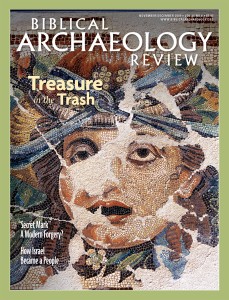How many Roman theaters survive in Israel and Jordan today?
Answer: 25
No archaeological tour of Israel or Jordan is complete without an excursion to a Roman theater. These architectural marvels, which are found in abundance on both sides of the Jordan River, are often so well preserved that a modern visitor can still experience the same sights and sounds that greeted the theater’s audience 2,000 years ago.
But despite their ubiquity and seemingly obvious function, the more than two dozen theaters found in Israel and Jordan defy any straightforward explanation. Contrary to their appellation, most of the theaters were neither built nor frequented by Romans. From their first appearance in Palestine and Transjordan during the first century B.C., the theaters were the work of powerful local rulers who sought to cloak themselves and their kingdoms in the cultural mantle of Hellenic civilization.
Herod the Great, for example, had several theaters built throughout Judea, the largest and most imposing of which overlooked the Mediterranean at the coastal city of Caesarea. Likewise, the Nabataean kings of Transjordan built several theaters across their desert kingdom, including a 6,000-seat structure that was chiseled almost entirely from the natural sandstone bedrock of Petra. With the rise of the distinctly Hellenized cities of the Decapolis in the first and second centuries A.D., even more theaters were erected across the urban landscape of Roman Palestine, including Beth Shean, Jerash (ancient Gerasa), Amman (ancient Philadelphia) and Shechem.
Already a library member? Log in here.
Institution user? Log in with your IP address.

